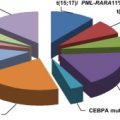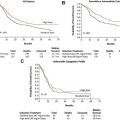In the first article, Drs Abdel-Wahab, Patel, and Levine inform us of new genetic mutations in acute myeloid leukemia (AML) that impact on prognosis and help guide therapeutic decisions. This may be particularly important for patients with a normal karyotype, which is a very heterogenous group of AMLs, in which discovery of recurrent genetic mutation can now define specific subtypes for whom different post-remission approaches are now better defined. More clinical prognostic factors in both AML and acute lymphoblastic leukemia (ALL) are discussed by Drs Ganzel and Rowe. They make the important point that many of the more clinical prognostic factors used in the past may be supplanted by cytogenetics and molecular genetics. Precious few advances in induction and post-remission strategies in AML during the last 2 decades have been reported. However, recent studies suggest dose intensification of anthracyclines among younger patients and dose reduction in consolidation intensity may be changing routine practice. Although the immunoconjugate gemtuzumab ozogamicin has been withdrawn from the commercial market, several studies discussed by Drs Rosenblat and Jurcic suggest this agent may have a role in the core binding factor AML. They also identify matched unrelated donor transplantation as a promising treatment for patients with high-risk AML.
In a very comprehensive way, Dr David Steensma describes acute leukemias of mixed phenotype and ambiguous lineage in the context of the World Health Organization 2008 classification. Dr David Grimwade provides important data on specific cytogenetic subtypes of AML. Three articles are devoted to ALL. The first by Dr Adele Fielding addresses current therapeutic strategies for both Philadelphia-negative and -positive ALL. Major advances have occurred among patients with Philadelphia-positive disease with the addition of tyrosine kinase inhibitors (TKI) to chemotherapy. The role of transplantation in the TKI era and the role of TKI as maintenance after transplantation both remain to be studied. In the second, Dr Mark Litzow outlines novel strategies including the addition of monoclonal antibodies to conventional chemotherapy as well as the very exciting agent Blinatumomab, a bispecific T-cell engager that combines an anti-CD19 antibody targeted to B cells and an anti-CD3 antibody targeted to T-cell recruiting T cells and therefore the immune system. This agent appears in preliminary studies to have remarkable activity in ALL. Another promising new therapeutic approach involves a cellular immunologic strategy of adoptively transferred autologous CD19-targeted T cells, discussed by Drs Park, Sauter, and Brentjens after a thorough presentation of the role of allogeneic HCT in ALL. Acute promyelocytic leukemia (APL) is an uncommon subtype of AML that has unique biologic and clinical characteristics. It has emerged as highly curable, whereas it once was the most lethal at diagnosis and during induction because of often catastrophic bleeding. Drs Baljevic, Park, Stein, Douer, Altman, and Tallman discuss recent developments in induction and post-remission therapy for patients with APL tailored in a risk-adapted manner that leads to a very high cure rate and, for the first time, using approaches without or, at most, only minimal, chemotherapy when both all-trans-retinoic acid and arsenic trioxide are given.
Finally, the role of HCT is addressed in the article by Dr Lazarus with a focus on new transplant strategies. The heterogeneity of the acute leukemias is amply demonstrated by the fact that we can cure most patients with one subtype (APL) with novel targeted agents with less chemotherapy and others (patients with AML and primary induction failure) can only be cured with intensive transplant approaches that rely on the innate immune system. We hope the student of the acute leukemias, at any level of sophistication, will find this issue both helpful and, in fact, inspirational. As Henry David Thoreau wrote, “How many a man has dated a new era in his life from the reading of a book.”
Stay updated, free articles. Join our Telegram channel

Full access? Get Clinical Tree






